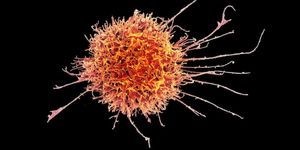Caribou conservation: is it enough?
Caribou are one of the mystic animals of the Northern hemisphere, large ungulates known for their branched antlers and tales of pulling Santa’s sleigh (did you know reindeer are just domesticated caribou?). They play an important role in the ecosystems of boreal forests and are equally important to Indigenous peoples’ cultures and economies. But caribou numbers are in fast decline, especially across Canada. A new study published in Biological Conservation focusing on Alberta’s caribou populations suggests that current conservation efforts must be revised to ensure the survival of this great species.
The research comes from a team of scientists at the University of British Colombia who used camera traps to analyze how conservation efforts are affecting caribou populations in the oil sands region of northeastern Alberta. Specifically, they wanted to look at replanted seismic lines, the paths of land that were once cleared for oil and gas exploration and pipelines that have since been replanted.
Until now, conservations have thought that seismic lines negatively impact caribou because they disturb habitat and make it easier for predators like black bears and wolves and food competitors like moose and white-tailed deer to travel more efficiently. Because of this, efforts to replant the seismic lines with native trees and natural features like mounds and tree debris have been underway. This method should ideally help caribou populations.
"In theory, restoration should have made it much more difficult for predators to travel across the caribou range, but our cameras showed us a different picture," said lead author Erin Tattersall. Tattersall goes on to explain, “Restoration did not do much to keep caribou apart from their predators and competitors, at least not in the short term.”
What the researchers found, instead, was that predators used the restored seismic lines the same as they used unrestored lines. They did find that white-tailed deer showed less use of the restored lines but did not see this similar finding with other food competitors. Interestingly, caribou themselves didn’t seem to have a preference for restored versus unrestored seismic lines – more important was their location. The researchers noted a specific preference for low-lying wetland areas and isolated areas.
The big take away from this study is that we must be more vigilant about conservation efforts’ outcomes. "It is possible caribou will eventually recover in the area we studied, and other restoration approaches in other regions could also prove more immediately effective for caribou recovery," said senior author Cole Burton. "But our results clearly show that we can't simply assume the best -- it's necessary to closely monitor the actual results of restoration."
Sources: Science Daily, Biological Conservation









